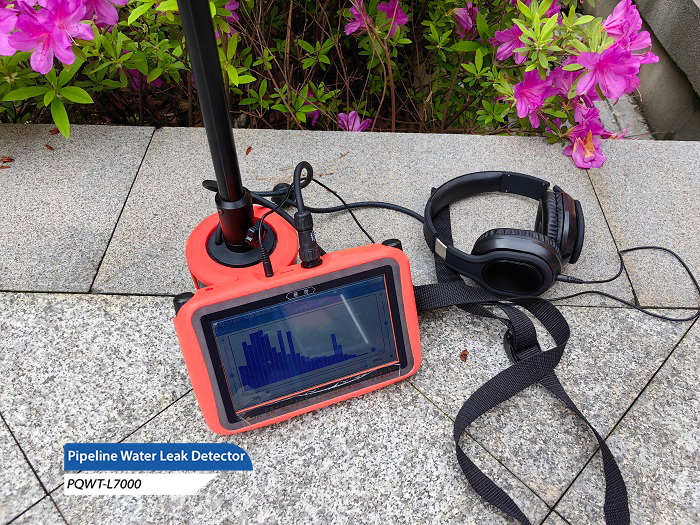In the daily maintenance of urban infrastructure, water leakage of underground pipelines not only causes great waste of water resources, but also triggers a series of secondary problems, such as soil erosion, road subsidence and so on. Therefore, it is particularly important to accurately and timely find and repair the leakage of underground pipes. In this paper, we will introduce the common phenomenon of water inlet pipe leakage, the detection method and the technical principle of using water pipe detector for accurate location.

Observation of water inlet pipe leakage
Water inlet pipe leakage signs are usually more obvious, through the following phenomena for initial judgment:
1. Changes in walls and ceilings: The water stains in the leaking area gradually expand over time, which may be just the size of a coin at the beginning, but soon extends to a basin or even a larger area. If the leakage of water downward infiltration to the downstairs tenants, the drip rate and the affected area will rapidly intensify, this is because the water pressure inside the pipeline continues to push the water leakage, the leakage phenomenon will become increasingly serious, and can be seen in a short period of time.
2. water facilities around the accumulation of water: kitchen sinks, showers, toilets or basins below the frequent accumulation of water, even if cleaned up soon after the re-gathering, which is often direct evidence of pipeline leakage.
Leak detection methods and instrumentation applications
Determine whether the water inlet pipe leakage, in addition to visual observation of the above phenomena, but also need to take scientific detection measures. Commonly used detection process is as follows:
1. Close the valve: first of all, close all the valves connected to the suspected leakage pipe to ensure that the test environment is closed.
2. Instrument intervention: Subsequently, the water pipe detector is connected and the entire piping system is pressure tested. This test ensures the tightness of the piping system and creates conditions for accurate detection.
3. Pinpointing: The water pipe detector, also known as a pressure water pipe detector, pinpoints leaks by capturing and analyzing the acoustic signals generated when water leaks inside the pipe. These sounds are produced by water impacting the pipe wall or spreading through the soil to the ground when ejected from the breach under pressure. These weak signals are captured and amplified by highly sensitive sensors, and eventually scanned above the ground to determine the exact location of the leak.
How the detector works
The core principle of the water pipe detector is based on the "acoustic principle", i.e. "the impact noise generated by the flowing water in the pipe when it is ejected from the leakage point under pressure propagates along the pipe or through the soil medium to the ground, and the sensor receives and amplifies this water leakage noise and analyzes it using a specific algorithm. The leakage noise is received and amplified by sensors, processed and analyzed using specific algorithms to accurately locate the leakage point". This method is not only applicable to water, but also can be used for other liquids or gases to accurately locate the leakage point, is an indispensable high-tech tool in the maintenance of modern urban pipelines.
In the face of underground pipeline leakage, timely and accurate detection and localization is the key to solving the problem. By observing the leakage phenomenon, using professional water pipe detector for pressure test and acoustic positioning, the leakage point can be found efficiently, laying the foundation for the subsequent repair work. With the progress of science and technology, water leakage detection technology is also evolving, providing more accurate and efficient solutions for urban pipeline maintenance, and safeguarding the safety and rational use of water resources.








